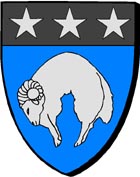
England
Bro saoz


Yorkshire
...
| Noms de Personnes |

England Bro saoz |

|

Yorkshire ... |
Leeds
Cambodunum
| page ouverte le 07.06.2004 | forum de discussion
* forum du site Marikavel : Academia Celtica |
dernière mise à jour
11/02/2009 13:32:11 |
![]()
|
Définition : Ville d'Angleterre; comté de Yorkshire; Dans ses parages immédiats devait se trouver le camp romain CAMBODUNUM, que Rivet & Smith situent près du confluent de la Sheepscar Beck et de la Aire, et qu'Ordnance Survey place sur le route de York à Manchester. Population : 123000 hab. en 1863; 509300 hab. en 1979; |
|
![]()
|
Extrait de la carte Ordnance Survey : Map of Roman Britain. |
![]()
|
Histoire : Place-forte à l'époque d'Édouard le Confesseur. Richard II y a été emprisonné en 1399. |
![]()
| Archéologie |
![]()
|
Étymologie A. CAMBODUNUM : * Rivet & Smith : SOURCES - Itinéraire d'Antonin, 4686 (Iter II) : CAMBODUNO; variante CAMPODUNO. - Ravenna, 1077 : PAMPOCALIA. DERIVATION. For Ravenna's conflation, see CALCARIA. The forms with -mp- indicate an assimilation of the first element to Latin campus ' field' ; if we had only AI's variant, we should think it a merely scribal assimilation, but the fact that Ravenna has it too, and that Bede in HE II, 14, shows the same (in Campodono) indicates that the assimilation took place among speakers of Latin, not of British, in the place concerned. See also p. 32. It is noteworthy that the exactly parallel Cambodunum (now Kempten, Austria) is recorded with original -mb- in Ptolemy, ND and TP, but with the same assimilation to Latin campus in AI 237,2, 250,8 and 258,12. DERIVATION. *Cambo- in Celtic is basically ' curved, crooked ', now represented by Welsh cam, Breton and Irish camm. The root was taken into late Latin and produced a large word-family, including Italian gamba and French jambe 'leg' (the 'bent limb'), French dialectal chambon 'terrain fertile' via the sense 'partie concave d'un méandre étant formée d'alluvions riches' (Vincent 237), etc.; while from related *cumbo- as a noun 'receptacle, trough ' comes Welsh cwmm ' valley ' and such Romance words as Spanish comba 'bend, bulge', Galician comba 'valley'. Germanic Hamm is cognate (hence Hamburg = Cambodunum). Cambo, a common personal name, perhaps indicated 'hunch-backed'. Other Cambodunum names are known : one > Chambezon (Haute-Loire, France), another > Chandon (Fribourg, Switzerland), another > Kempten (Zurich, Switzterland), in addition to that mentioned above; RC XLII (1925), 99, and XLIII (1926), 347. The element *cambo- is present in the next two British names, and in many others abroad : Cambate > Gross-Kembs (Switzerland), Cambaetum > Cambezes (Orense, Spain), Cambracum > Cambarco (Santander, Spain), and others listed by Holder I. 710 and Ellis Evans GPN 322. For -dunum, see BRANODUNUM. The sense of Cambodunum is 'fort at the bend' (of the river), less probably 'crooked fort'. P. Lebel in RIO, XIV (1962), 171, suggests that *cambo- here and in Camboritum has a secondary sense, 'dangereux': 'Cambodunum ne serait pas "la forteresse courbe" mais celle qui est dangereuse pour l'assiégeant : ce serait un nom de bon augure.' But there seems little need to depart from the literal sense as we have given it. IDENTIFICATION. Probably an unlocated Roman fort at Leeds, Yorkshire, at the confluence of the Sheepscar Beck with the Aire (SE 3033). Note. It is remarkable that this Romano-British name should have been known to Bede (in Campoduno, II, 14). Calcaria and Cataracta / Cataractone, together with the present name, do not figure in the classical sources which were known to Bede (Pliny, Solinus, Orosius, etc.) and from which he took other Romano-British names. Calcaria, Cambodunum are listed by AI and Ravenna, and Cataractonium by thee and also by Ptolemy, but these texts were not known to Bede. He can have taken them only from the continuing Latin tradition of the British-speaking Kingdom of Elmet, which retained its independence into the seventh century (the reference in II, 14 is to Paulinus building his church in Campoduno, an event to be dated to soon after A.D. 627); but since the existence of the Kingdom did not extend to Bede's youth, he must have had a written source deriving from it and presumably preserved by the Church. The point is not without significance for Bede studies. --------------------- "*Cambo- in Celtic is basicaly 'curved, crooked' = "Cambo- en celtique signifie littéralement 'courbe, tortueux"." --------------------- ******* B. LEEDS : * Eilert Ekwall :
******* |
![]()
|
Sources : - M.N BOUILLET : Dictionnaire universel d'histoire et de géographie. Hachette. 1863. - Petit Larousse illustré. 1979. * ALF RIVET & Colin SMITH : The Place-Names of Roman Britain; * Eilert EKWALL : The Concise Oxford Dictionary of English Place-Names.Clarendon Press. Oxford. 4è édition; réédition 1980. - envoi de : |
![]()
|
Liens électroniques des sites Internet traitant de Leeds / Cambodunum : * lien communal : * autres liens Internet : forum de discussion* forum du site Marikavel : Academia Celtica hast buan, ma mignonig go fast, my little friend |
![]()